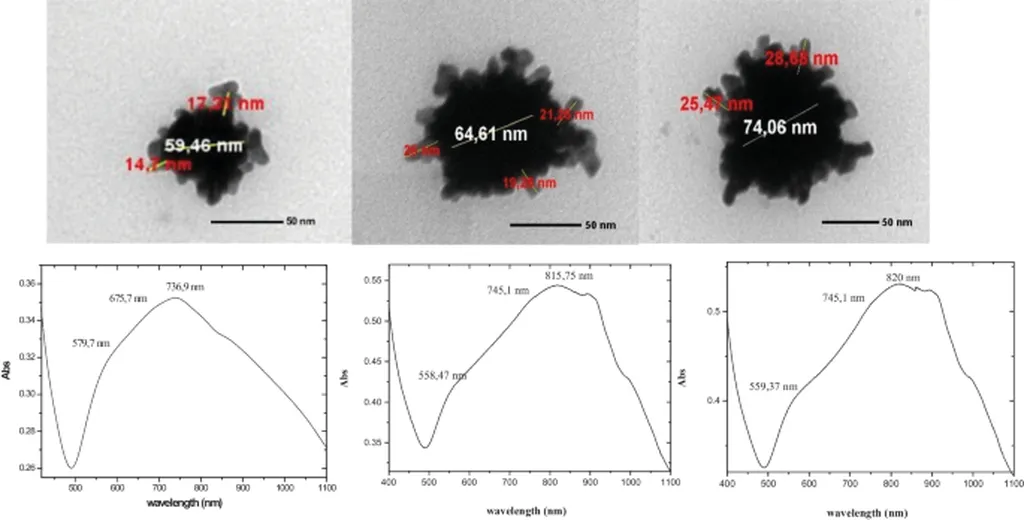In a groundbreaking development that could reshape the landscape of nanomaterial synthesis, researchers have unveiled a novel method for creating gold nano-sea-urchins using chitosan as a stabilizer. This innovative approach, detailed in a recent study published in ‘Materials Research Express’ (which translates to ‘Materials Research Express’ in English), offers a surfactant-free, seedless synthesis that could have significant implications for the energy sector and beyond.
The lead author of the study, R A Guerra-Santopietro from the Centro Universitario de Tonalá at the Universidad de Guadalajara in Mexico, explains the significance of their findings. “We’ve developed a one-pot synthesis method that not only simplifies the production process but also eliminates the need for cytotoxic surfactants,” Guerra-Santopietro said. “This makes our gold nano-sea-urchins more viable for biomedical applications and potentially more environmentally friendly.”
The synthesis process involves reducing gold salt (HAuCl₄) followed by an anisotropic nucleation process promoted by Ag⁺ ions. This results in the formation of irregularly shaped nanoparticles, which then aggregate to form the distinctive sea-urchin structures. The size and aggregation of these structures were studied as a function of pH and chitosan molecular weight, with chitosan acting as a stabilizer.
One of the most compelling aspects of this research is its potential commercial impact. The energy sector, in particular, could benefit from the unique properties of these gold nano-sea-urchins. Their enhanced surface area and distinctive shape could improve the efficiency of catalytic processes, which are crucial in energy conversion and storage technologies.
“The ability to control the size and shape of these nanoparticles opens up new possibilities for their use in various applications,” Guerra-Santopietro noted. “Their enhanced surface area could lead to more efficient catalytic processes, which are essential in the energy sector.”
Moreover, the surfactant-free nature of the synthesis process could make these nanoparticles more environmentally friendly, addressing a growing concern in the industry. The study’s findings could pave the way for more sustainable and efficient nanomaterial production methods, potentially revolutionizing the field.
As the research community continues to explore the applications of these gold nano-sea-urchins, the potential for innovation seems boundless. The study’s insights could inspire further developments in nanomaterial synthesis, driving progress in the energy sector and beyond. With the publication of this research in ‘Materials Research Express’, the scientific community now has a new tool in its arsenal, one that could shape the future of nanomaterial technology.

